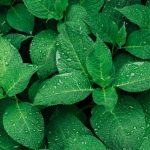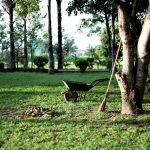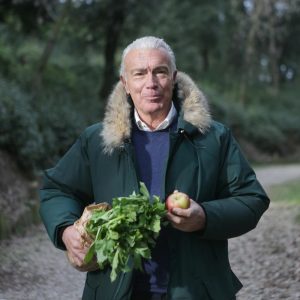Aaron Clark, president of Desert Foothills Landscape, was featured in the April 2016, Ornamental Breeder publication story called “The ‘wow’ Factor”.
Today’s consumers want to make a statement with their landscapes, whether it’s through sustainability or plants that make the neighbors take notice. Aaron Clark, president of Desert Foothills Landscape in Arizona, is seeing his clients during the last four or five years asking for what he terms “the wow factor.”
“That has definitely been a major trend in our area, going from homeowners needing to put in some landscaping to meet HOA compliances to wanting to make an impression and spending a lot of money sometimes (upwards of $100,000 on occasion) to do so,” says Clark, who deals with a number of upscale customers who want to separate their homes from others and, well, make a statement. “During the lean times from 2008 to around 2011, homeowners were looking to get by with less, as long as they met HOA requirements for landscaping. But that has all changed. They want to create an oasis, a personal retreat for themselves and their families.”
Aggressive landscaping also provides enhanced privacy for homeowners, while increasing their property’s value. Says Clark, “You are seeing landscaping being mentioned when homes are being sold. That was hardly ever the case.”
Clark, who adds that customers are becoming increasingly involved in the entire process of landscaping, from selecting the plants to helping with design elements, usually initially creates a focal point or points in a yard through the use of large cactus and boulders. He supplements the setting with flowing shrubs and plants, such as desert marigolds, lantana, ‘Orange Jubilee’ and Yellow Bells (tacoma stans). Cactus also produce flowers at certain times of the year, so “we can create color pretty year round for the homeowner, which is what they want.” Due to water restrictions, Clark says trees, shrubs and smaller plants have to be able to flourish with sometimes minimal watering.
“The biggest trend we see emerging in landscape design is a desire for features that enhance sustainability,” opines Tim Bonner, a designer in the Ruppert Landscape’s Baltimore, Md. landscape management branch. “In Maryland especially, we see an increase in demand for controlled storm water runoff, retention ponds, and other storm water management tactics to reduce runoff and pollution to the Chesapeake Bay.”
Bonner says his customers are leaning away from annual installations and are experimenting more with ornamental grasses, perennials and groundcover, like liriope, which helps prevent erosion.
“We also find customers requesting native and indigenous plant species that support local insect and wildlife populations and require less fertilizer, pesticides, and water than exotic plants,” he says. “A great example of this is a butterfly garden, which supports pollinators and other wildlife. Customers are choosing these types of plant material, not only to boost sustainability, but because they require less maintenance over time.”
Bonner adds that during the last few years, the economy has been on an upward trend in his area and customers are investing more in their landscapes, asking for enhancement designs, and looking for three- to five- year plans for expanding or improving their properties. “We try to be as proactive as possible in providing design options that fit the client’s needs and budget.”
Gary Roberts, owner of Great Oaks Landscape Associates in Michigan, says his “upscale clients” are looking for “cleaner, more sophisticated” landscapes that will “withstand the test of classic elements and simplicity.” He adds, “Quality of hard goods is becoming very important. They do not want materials or designs that will quickly date the properties. If the setting permits, clients are using more native plants in harmonious and natural groupings, as well as natural wetland mitigation areas and vast expanses of wildflower seed beds.”
Ease of maintenance can play a factor in selection of plantings for landscaping, but it depends upon the client, says Roberts. “But, without exception, a properly maintained property allows the design intent to withstand time and remain clean. Healthy vigorous landscapes always stand out. Annuals are going out of vogue ,while repeating perennials, ground covers, and shrubs have increased.”
Rob Conaway, general manager of Country Springs Wholesale Nursery in Virginia, sees variegated plants as increasing in popularity of late. “Perennials have been used in landscapes more and more recently. Anything with good color seems to move in volume.”
Noting that the recession had a huge impact on growers, Conaway says there remain “major shortages” of many landscape plants, even though the economy has rebounded and consumers are looking to have projects done at their homes and businesses.
By: John Torsiello








